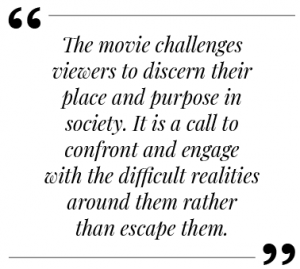By Herman M. Lagon

THE CINEMATIC landscape of the Philippines is as diverse as its islands. However, intimate stories like “Magnifico” often leave an indelible mark on the psyche of its audience. The movie is a poignant portrait of familial ties, poverty, and a child’s innate goodness amidst adversity. Yet, despite its evocative storytelling, remarkable performances, and international accolades, it raises a puzzling question: Why did such a masterpiece fail to achieve blockbuster status among its intended audience?
Script written by Michiko Yamamoto and directed by Maryo J. de los Reyes, “Magnifico” tells the story of a young boy, Pikoy (Jiro Manio), navigating the challenging world of rural Laguna. Hailed for its moving portrayal of familial bonds, community, and the unwavering spirit of a child, the film’s vivid tableau of emotions resonates deeply with many Filipinos. Reviews from 2003 to 2012 overwhelmingly underscore its evocative nature, with viewers confessing to shedding tears and feeling catharsis. These critiques laud Magnifico as a “portrait of altruism in its purest form.”
Yet, even with such acclaim, the movie faced an uphill battle for mainstream commercial success in its homeland. Several factors can be attributed to this. First, there is the competition with mainstream movies that lean towards commercial viability rather than storytelling depth. The Filipino audience, much like audiences worldwide, sometimes gravitates towards light-hearted, escapist cinema, given their everyday challenges.
However, another factor worth contemplating is how Filipinos perceive local cinema. The lament on the prevalence of poverty in the country is a stark reality for many. While “Magnifico” is a mirror reflecting these societal challenges, it is possible that for some, the film hits too close to home. For the everyday Filipino grappling with economic hardships, the cinema can serve as an escape, and confronting these realities on screen might not be their preferred form of leisure.
The movie challenges viewers to discern their place and purpose in society. It is a call to confront and engage with the difficult realities around them rather than escape them. However, this kind of introspection requires an openness of heart and mind, a willingness to engage with the uncomfortable and a profound reflection on one’s role in the larger community.
Yet, the movie’s lack of commercial success—similar with the fate of outstanding Filipino films like “Insiang” (1975), “On The Job” (2013), “Birdshot” (2016), “Anino” (2000), “Radyo” (2001), “Moral” (1982), “Tuhog” (2001), “Ekstra” (2013), “Serbis” (2008), “Respeto” (2017), “Ang Larawan” (2017), “Sa Kuko ng Agila” (1990), “Kubrador” (2006), “Liway” (2018), “John Denver Trending” (2019), “Pamilya Ordinaryo” (2016), Ang Pagdadalaga ni Maximo Oliveros” (2005), and “Ang Babaeng Humayo” (2016)—does not diminish its value. Instead, it underscores the need for a more supportive ecosystem for Filipino filmmakers who tread off the beaten path. It is a reminder for audiences to sometimes step out from the their boxes, get away from their comfort zones, and embrace films that, while challenging, offer profound insights into the human experience.
As we ponder the fate of the 20-year-old “Magnifico” in the Filipino cinematic landscape, it is a beckon to recognize and cherish the gems in our midst. In a society often grappling with identity and legacy, films like “Magnifico” are essential–they hold a mirror to society, challenge conventions, and, ultimately, redefine the discourse.
***
Doc H fondly describes himself as a ‘student of and for life’ who, like many others, aspires to a life-giving and why-driven world that is grounded in social justice and the pursuit of happiness. His views herewith do not necessarily reflect those of the institutions he is employed or connected with.

